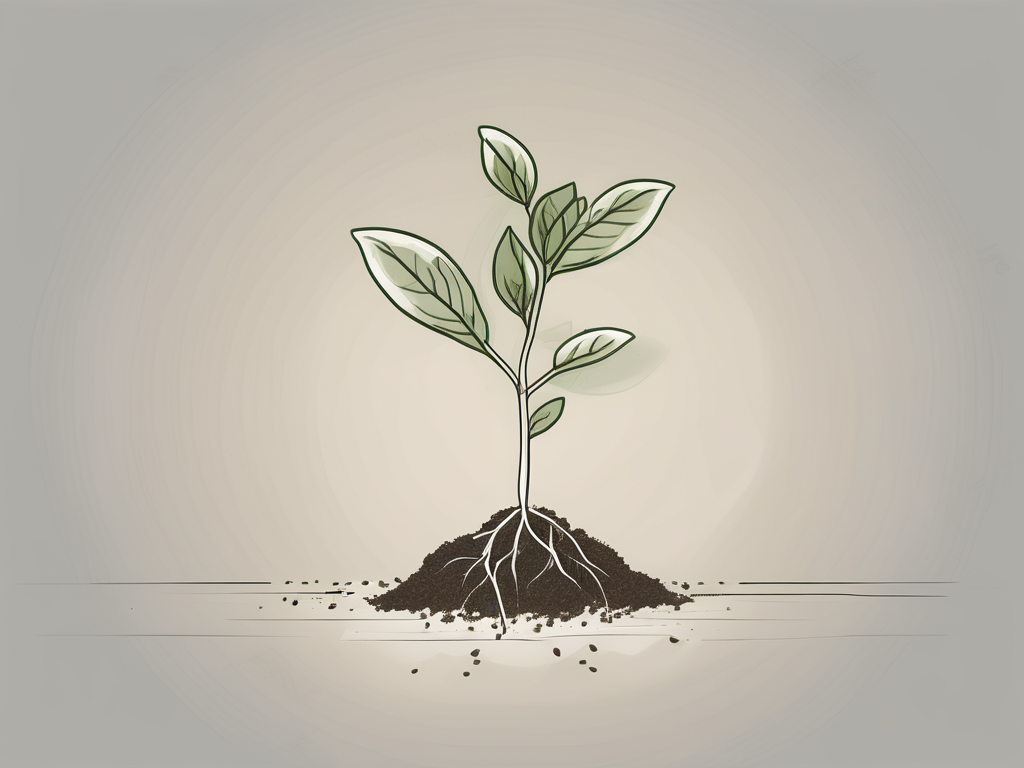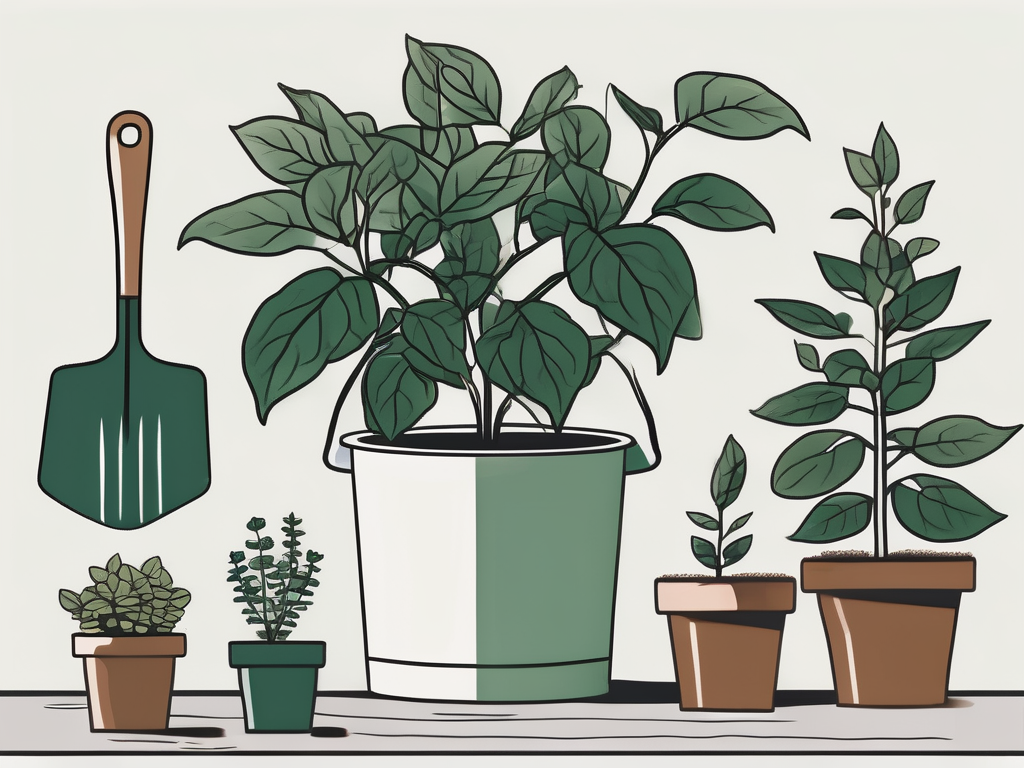
English ivy, with its trailing vines and lush leaves, is a popular choice for houseplant lovers. But like any plant, it needs a little TLC to thrive, and that includes repotting. If you're unsure about when and how to repot your English ivy, don't worry—I've got you covered.
In this step-by-step guide, I'll walk you through the entire repotting process, from choosing the right pot to ensuring your ivy settles into its new home comfortably. By the end, you'll feel confident and ready to give your plant the fresh start it deserves.
When to Repot English Ivy
Knowing when to repot your English ivy is the first step. Like people, plants can outgrow their homes, and that's usually the best time to move them. But how do you know when your ivy has outgrown its pot?
Here are a few signs to look for:
- Roots Peeking Out: If you notice roots poking through the drainage holes, it's a clear sign the plant needs more space.
- Water Draining Too Quickly: When you water your plant and the water seems to flow right through, it might mean the roots have taken over the pot, leaving little soil to absorb moisture.
- Stunted Growth: If your ivy's growth has slowed or stopped, it might be due to cramped conditions.
Typically, repotting every one to two years is a good practice for English ivy. Spring is the best time to do this, as the plant is naturally more active and can recover from the move more easily.
Choosing the Right Pot
Choosing the right pot can make a big difference in your plant's health. It’s like finding the perfect pair of shoes—comfy and with a bit of extra room!
Here’s what you should consider:
- Size: Opt for a pot that's about 1-2 inches larger in diameter than the current one. Too big, and the soil can retain too much moisture, leading to root rot.
- Material: Terracotta pots are popular because they’re breathable, which helps prevent overwatering. However, they do dry out quicker, so keep an eye on moisture levels.
- Drainage: Always choose a pot with drainage holes to prevent waterlogging. No one likes soggy feet, including your plants!
Remember, the pot is not just a container—it's part of your plant's environment. Make sure it suits both your plant’s needs and your aesthetic preferences.
Gathering Your Supplies
Before you start repotting, you'll want to gather all your supplies. This way, you won't have to pause halfway through to hunt for something you forgot.
Here's a handy list of what you'll need:
- New Pot: As discussed, choose one with good drainage and an appropriate size.
- Fresh Potting Mix: A well-draining mix is ideal. You can use a standard potting soil, perhaps mixed with some perlite for extra drainage.
- Gardening Gloves: These aren't essential, but they can protect your hands from dirt and any potential irritants in the plant sap.
- Small Shovel or Trowel: To help you remove the plant and transfer soil without making too much of a mess.
- Watering Can: For a gentle watering post-repotting.
Having these items ready will make the process smoother and more enjoyable.
Removing the Ivy from Its Current Pot
This is where the action begins! Getting your ivy out of its current pot requires a gentle touch.
Here's how you can do it without stressing the plant:
- Water the Plant: A day before repotting, give your ivy a good drink. This makes the root ball easier to slide out.
- Loosen the Edges: Gently run a knife or a trowel around the edge of the pot to loosen the soil. Be careful not to damage the roots.
- Invert the Pot: Carefully turn the pot upside down, supporting the plant with your other hand. Tap the bottom of the pot to help the plant slide out. If it resists, don't force it—try loosening the edges a bit more.
Once the plant is out, it's time to give those roots some attention.
Inspecting and Trimming the Roots
Now that your ivy is free from its old pot, it's a good idea to check its roots. Healthy roots are usually white or light tan and firm to the touch.
Here's what you should do:
- Check for Rot: Look for any black, mushy roots. These are signs of root rot, and they need to be trimmed away.
- Trim Excess Roots: If the roots are densely packed, you can trim them back a little to encourage new growth. Use clean, sharp scissors or pruning shears.
- Untangle the Roots: If possible, gently untangle any circling roots. This helps them spread out in their new pot.
This root check-up is crucial for the long-term health of your plant, so take your time.
Preparing the New Pot
With the roots ready, it’s time to prepare the new pot. Think of this step as setting the stage for your plant’s new home.
Here's how to do it:
- Layer the Bottom: Add a layer of fresh potting mix to the bottom of the pot. This will elevate the plant to the correct height.
- Position the Plant: Place your ivy in the pot, making sure the top of the root ball is about an inch below the pot rim. This leaves room for watering.
- Backfill with Soil: Gently add more potting mix around the sides, filling the pot. Lightly press the soil to remove air pockets, but don’t compact it too hard.
Once the plant is securely in its new pot, it’s time for the finishing touches.
Watering and Settling In
After repotting, your ivy will need a little help settling into its new environment. Watering is key here.
Follow these steps:
- Water Thoroughly: Give your plant a good soak, allowing water to flow through the drainage holes. This helps settle the soil and provides immediate hydration.
- Adjust the Position: If the plant shifts as you water, adjust it so it stands upright.
- Find the Right Spot: Place your ivy in a location with indirect sunlight. Direct sunlight can stress the plant during this transition.
Your ivy might look a little droopy at first, but don't worry—it's just adjusting. It should perk up after a few days.
Ongoing Care and Maintenance
Now that your English ivy is repotted and happy, ongoing care is essential to keep it thriving. Think of this as your plant’s wellness routine.
Here’s what you can do:
- Regular Watering: Keep the soil consistently moist but not soggy. Over time, you'll learn your plant's rhythm.
- Fertilize Sparingly: During the growing season (spring and summer), feed your ivy with a balanced liquid fertilizer every month.
- Pruning: Trim any leggy or dead vines to encourage fuller growth.
- Pest Watch: Keep an eye out for pests like spider mites. If you spot any, a gentle spray of water or insecticidal soap should do the trick.
Consistent care will keep your English ivy looking its best, adding a fresh touch of green to your living space.
Common Problems and Solutions
Even with the best care, issues can arise. Here’s a quick rundown of common problems and how to tackle them:
- Yellow Leaves: Often a sign of overwatering. Adjust your watering schedule and check that the pot drains well.
- Wilting: This can be due to underwatering or root rot. Assess the soil moisture and adjust accordingly.
- Pests: As mentioned, spider mites and aphids can be problematic. Regularly inspect your plant and use insecticidal soap if needed.
- Leggy Growth: If your plant's stretching towards the light, it might need more indirect sunlight.
With a bit of attention and care, most issues are easily resolved, keeping your ivy lush and lively.
Final Thoughts
Repotting your English ivy might seem like a big task, but with the right steps, it's totally manageable. You've learned when to repot, how to choose the right pot, and how to care for your plant afterward. With these tips, your ivy will continue to thrive and brighten up your home.
At Cafe Planta, we love helping plant lovers create beautiful, thriving collections. If you have any questions about plant care, feel free to email us or send a message on Instagram. We're here to connect with you and share our passion for plants!












